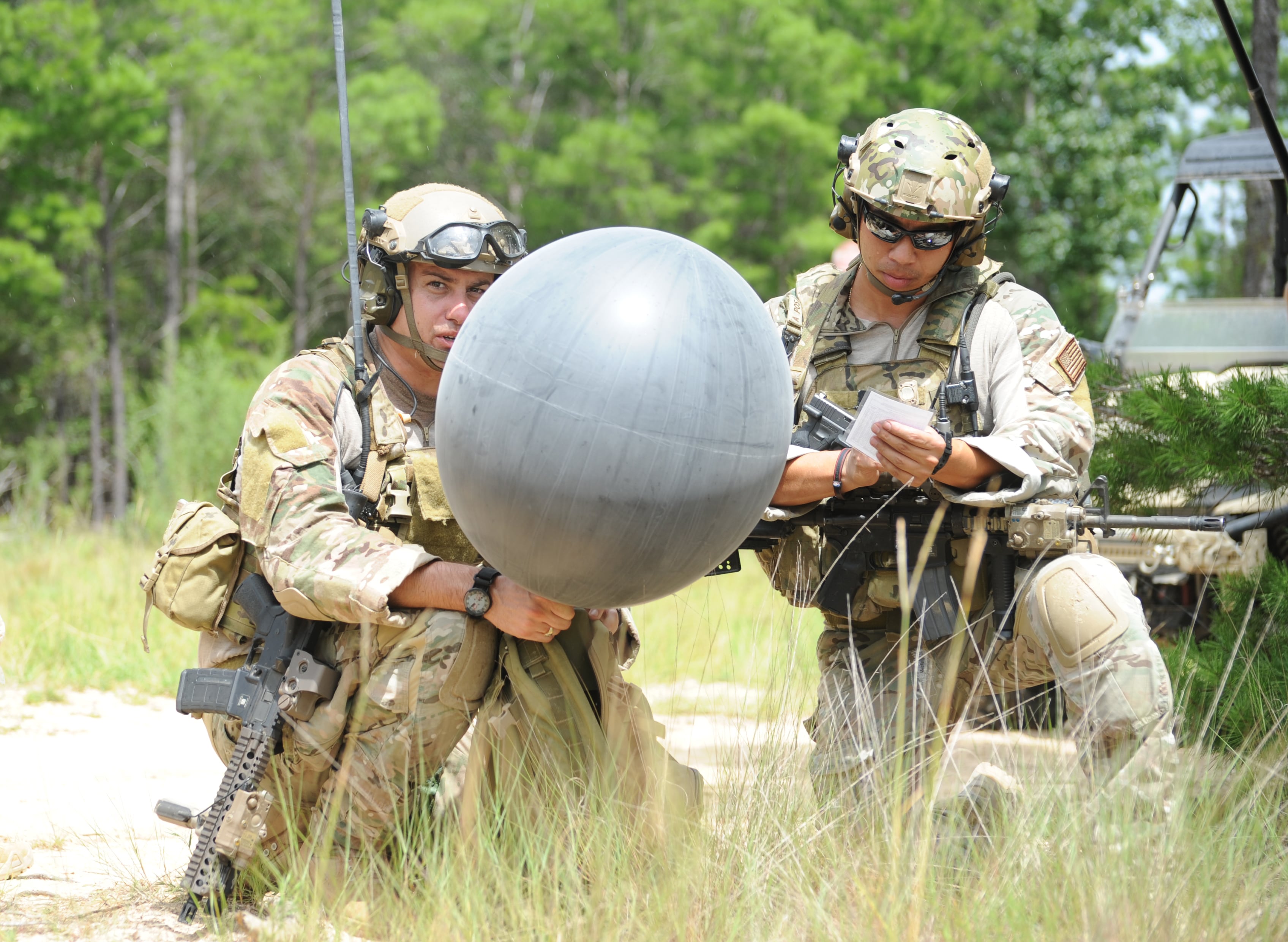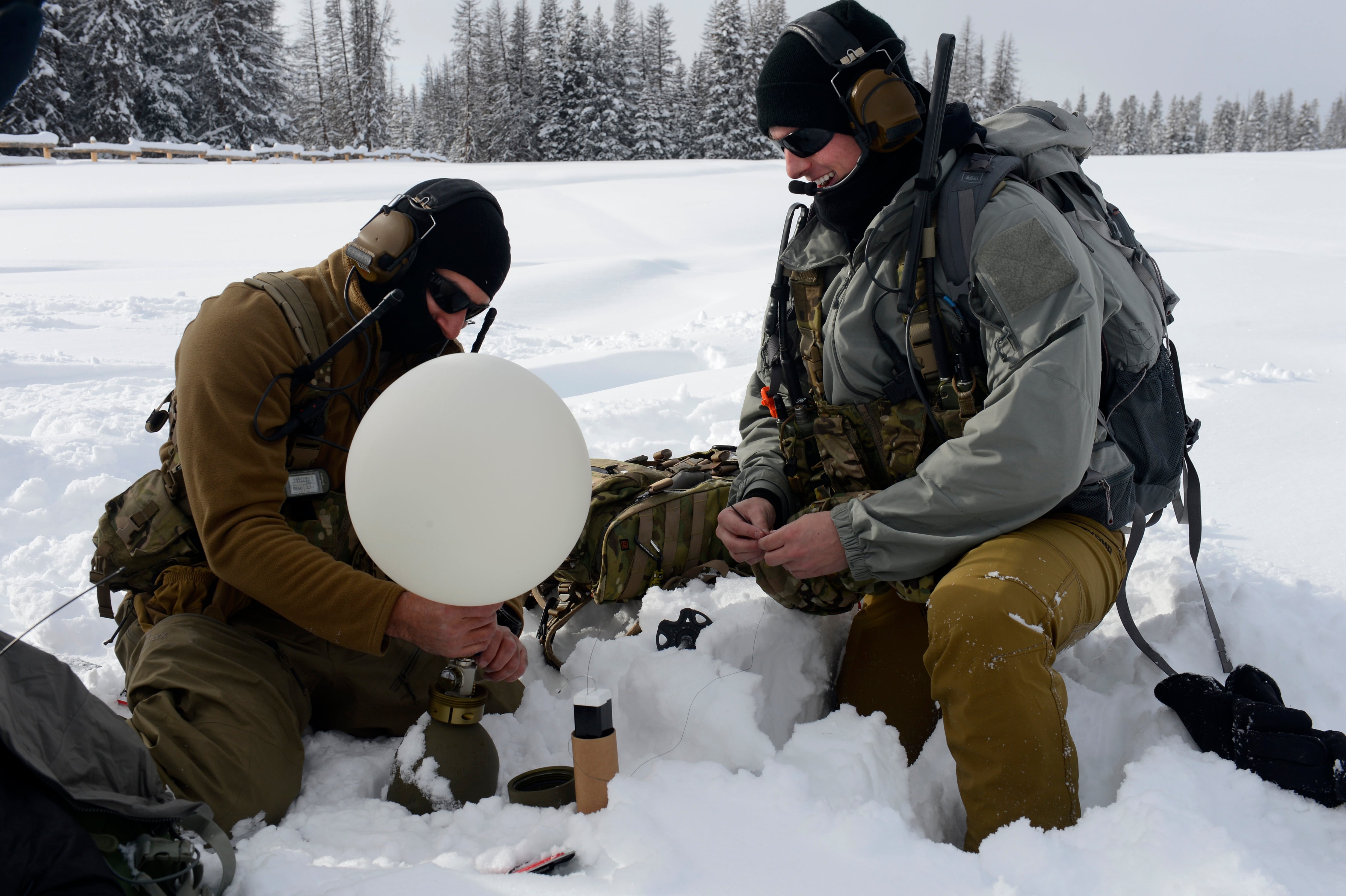Special operations weather team airmen, known as SOWTs, are getting a new name and mission.
The SOWT battlefield airman career field was renamed special reconnaissance on April 30 in order to bolster the Air Force Special Tactics teams — which consist of combat control, pararescue and tactical air control party airmen — as they prepare for an era of great power competition.
The new career field and training plan will not be signed and published until the fall, Air Force Special Operations Command officials told Air Force Times Monday. However, the changes in the pipeline will include adding reconnaissance-specific training, military free-fall and combat diver course.
“Air Commandos need to operate effectively across the spectrum of conflict, from the low-end to the high-end and everywhere in between,” said Lt. Gen. Brad Webb, AFSOC commander, in a service press release. “It’s what the nation expects from us and this transition demonstrates our commitment to the National Defense Strategy.”
The new SOWT mission will broaden the skill set of the combined Special Tactics teams, which act as the Air Force’s special operations ground force for precision airstrikes, combat search and rescue and austere airlift.
SOWT’s new role as special reconnaissance, or SR, will shift from a specialized weather analysis focus to one of multi-domain reconnaissance and surveillance, AFSOC officials said.
This will include “using leading edge technology" in forward operating environments to “characterize air threats” provide “environmental reconnaissance” and “perform target development” during special reconnaissance missions, officials said.
The new training guidelines will increase the ways in which SR airmen approach objectives on the battlefield by adding advanced parachuting and maritime insertion into their repertoire. SR airmen will also be trained with an emphasis on long-range rifles, the officials added.
“The evolution of Air Force Special Tactics on today’s battlefield has called for SOWT to transition their singular focus to a more holistic approach — the highly demanded special reconnaissance,” said Air Force Chief Master Sgt. Jeff Guilmain, command chief of the 24th Special Operations Wing, in the press release.
The SOWT career field was only given its own Air Force specialty code in 2008, combining the core skills of special operation forces with meteorology skills. SOWTs would deploy alongside other Special Tactics airmen to gather, assess and interpret environmental data in order to forecast weather impacts to operations.

In a location like Afghanistan, this was vital to successful air-ground operations, AFSOC said, but facing peer adversaries like Russia and China requires a broader focus.
“[Special reconnaissance] will truncate [special operations] weather training with a shift in focus from long-term regional forecasting to short-term, small-scale, team-specific environmental reconnaissance with an emphasis on special recon as a whole,” said Air Force Master Sgt. Thomas Howser, a career assistant functional manager for special reconnaissance.
“This move will modernize the force and bridge a gap across all domains,” Howser said. “It will allow joint-interoperability across all the services with regards to special reconnaissance.”
New pipeline:
SOWTs previously attended a version of the combat controller pipeline, sharing several major stopping points in the two-year training cycle that CCTs attend.
Now, the two training pipelines will more mirror one another.
SR airmen will attend the same selection course at Joint Base San Antonio-Lackland, Texas, initial skills course at Keesler Air Force Base, Mississippi, Army Airborne School at Fort Benning, Georgia, survival training at Fairchild AFB, Washington, and then the Special Operations Weather Course at Pope AFB, North Carolina, followed by a stint at the Special Tactics Training Squadron at Hurlburt Field, Florida.
Some of these schools function as the same stop-over locations for CCTs. For instance, Keesler provided initial weather training for SOWT, as well as initial air traffic control training for CCTs.
The two career fields share physical training regimens and team lives, but attend separate academic classes.
RELATED

Similarly, both CCTs and SOWTs went to Pope to attain their 3-level skill certification and earn their berets after an initial foray into land navigation, small-unit tactics, radio training and a set of final airfield assault exercises.
After Pope AFB, the CCTs would move into pre-scuba training at Hurlburt and then on to combat diver course and later military free-fall parachuting, while SOWTs did not.
Now, though, the new SR career field will continue to follow their CCT comrades through combat diver course and military free-fall parachute training.

The additional training will likely make the career field more selective, as some CCTs are known to fail out of the pipeline even after earning their beret due to the rigors of pre-scuba and combat diver course. After free-fall and dive training, SR airmen will still go through the Special Tactics Training Squadron to be made deployable.
“Currently, SOWTs go through advanced skills training at the Special Tactics Training Squadron and SR airmen will continue to do the same,” AFSOC officials told Air Force Times. “In AST, airmen are taught additional skills to become 5-level qualified and deployment ready. 5-level skills required of an SR airman will be outlined in the [career field education and training plan] published in the fall.”
Existing SOWTs will attend a transition course that will sign off SR-specific training, AFSOC said.
The SR career field name is also a nod to Air Force Lt. Col. William “Bill” Schroeder, a career special operations weather officer and the former commander of the 342nd Training Squadron at Lackland, Texas.
Schroeder, whose operator initials were “SR," was killed during a struggle against an armed gunman after he placed himself between the armed individual and the squadron’s first sergeant on April 8, 2016.
The new designation is just one way future special reconnaissance airmen will remember their roots and the true meaning of service before self, AFSOC said.
Kyle Rempfer was an editor and reporter who has covered combat operations, criminal cases, foreign military assistance and training accidents. Before entering journalism, Kyle served in U.S. Air Force Special Tactics and deployed in 2014 to Paktika Province, Afghanistan, and Baghdad, Iraq.





